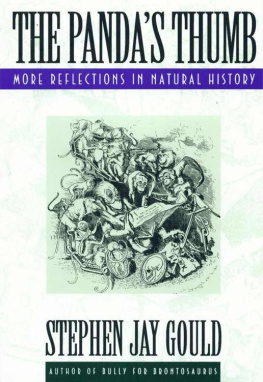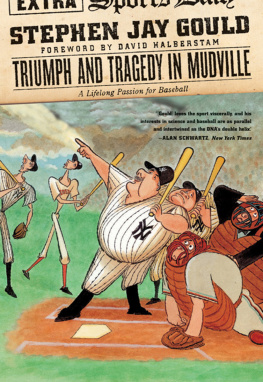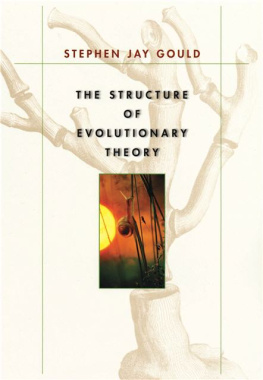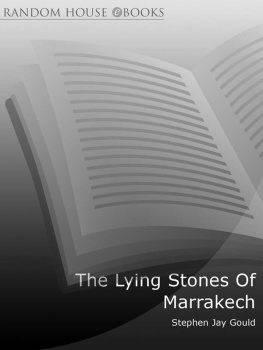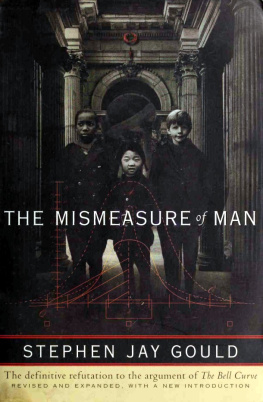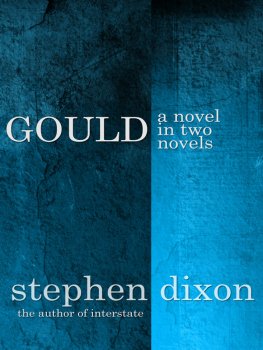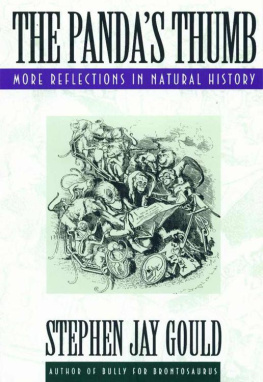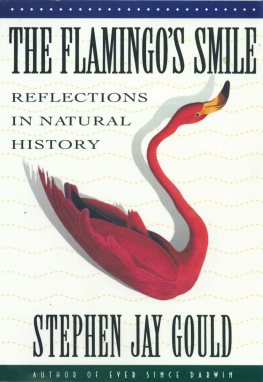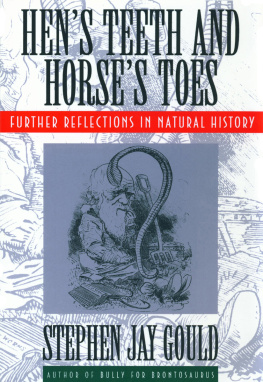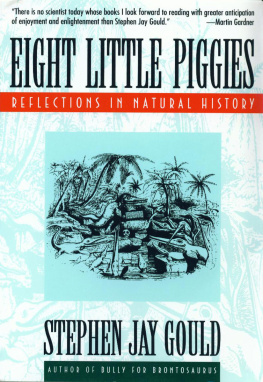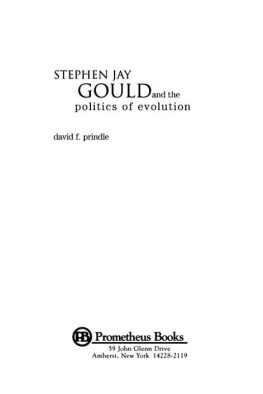Copyright 1980 by Stephen Jay Gould.
All rights reserved.
First published as a Norton 1980; reissued 1992.
Gould, Stephen Jay.
The pandas thumb.
Bibliography: p.
1. EvolutionHistory. 2. Natural selection
History. I. Title.
W. W. Norton & Company, Inc.
500 Fifth Avenue, New York, N.Y. 10110
www.wwnorton.com
W. W. Norton & Company Ltd.
Castle House, 75/76 Wells Street, London WIT 3QT
Three dedicated and compassionate teachers of my primary years, P.S. 26, Queens.
A teachercan never tell where his influence stops.
The Pandas Thumb
More Reflections in Natural History
Prologue
ON THE TITLE PAGE of his classic book, The Cell in Development and Inheritance , E.B. Wilson inscribed a motto from Pliny, the great natural historian who died in his boots when he sailed across the Bay of Naples to study the eruption of Mt. Vesuvius in A.D. 79. He suffocated in the same vapors that choked the citizens of Pompeii. Pliny wrote: Natura nusquam magis est tota quam in minimis Nature is to be found in her entirety nowhere more than in her smallest creatures. Wilson, of course, commandeered Plinys statement to celebrate the microscopic building blocks of life, minute structures unknown perforce to the great Roman. Pliny was thinking about organisms.
Plinys statement captures the essence of what fascinates me about natural history. In an old stereotype (not followed nearly so often as mythology proclaims), the natural history essay restricts itself to describing the peculiarities of animalsthe mysterious ways of the beaver, or how he spider weaves her supple web. There is exultation in this and who shall gainsay it? But each organism can mean so much more to us. Each instructs; its form and behavior embodies general messages if only we can learn to read them. The language of this instruction is evolutionary theory. Exultation and explanation.
I was lucky to wander into evolutionary theory, one of the most exciting and important of all scientific fields. I had never heard of it when I started at a rather tender age; I was simply awed by dinosaurs. I thought paleontologists spent their lives digging up bones and putting them together, never venturing beyond the momentous issue of what connects to what. Then I discovered evolutionary theory. Ever since then, the duality of natural historyrichness in particularities and potential union in underlying explanationhas propelled me.
I think that the fascination so many people feel for evolutionary theory resides in three of its properties. First, it is, in its current state of development, sufficiently firm to provide satisfaction and confidence, yet fruitfully undeveloped enough to provide a treasure trove of mysteries. Second, it stands in the middle of a continuum stretching from sciences that deal in timeless, quantitative generality to those that work directly with the singularities of history. Thus, it provides a home for all styles and propensities, from those who seek the purity of abstraction (the laws of population growth and the structure of DNA) to those who revel in the messiness of irreducible particularity (what, if anything, did Tyrannosaurus do with its puny front legs anyway?). Third, it touches all our lives; for how can we be indifferent to the great questions of genealogy: where did we come from, and what does it all mean? And then, of course, there are all those organisms: more than a million described species, from bacterium to blue whale, with one hell of a lot of beetles in betweeneach with its own beauty, and each with a story to tell.
These essays range broadly in the phenomena they treatfrom the origin of life, to the brain of Georges Cuvier, to a mite that dies before it is born. Yet I hope that I have avoided that incubus of essay collections, diffuse incoherence, by centering them all upon evolutionary theory, with an emphasis on Darwins thoughts and impact. As I stated in introducing my previous collection, Ever Since Darwin: I am a tradesman, not a polymath. What I know of planets and politics lies at their intersection with biological evolution.
I have tried to weld these essays into an integrated whole by organizing them into eight sections. The first on pandas, turtles & anglerfish, illustrates why we can be confident that evolution occurred. The argument embodies a paradox: the proof of evolution lies in imperfections that reveal history. This section is followed by a club sandwichthree sections on major themes in the evolutionary study of natural history (Darwinian theory and the meaning of adaptation, the tempo and mode of change, and the scaling of size and time), and two intervening layers of two sections each (III and IV, and VI and VII) on organisms and the peculiarities of their history. (If anyone wants to pursue the metaphorical sandwich and divide these seven sections into supporting structure and meat, I will not be offended.) I have also impaled the sandwich with toothpickssubsidiary themes common to all sections, and intended to prick some conventional comforts: why science must be embedded in culture, why Darwinism cannot be squared with hopes for intrinsic harmony or progress in nature. But each pinprick has its positive consequence. An understanding of cultural bias forces us to view science as an accessible, human activity, much like any form of creativity. An abandonment of the hope that we might read a meaning for our lives passively in nature compels us to seek answers within ourselves.
These essays are lightly edited versions of my monthly columns in Natural History Magazine, collectively titled This View of Life. I have added postscripts to a few: additional evidence of Teilhards possible involvement in the Piltdown fraud (essay 10); a letter from J Harlen Bretz, controversial as ever at 96 (19); confirmation from the southern hemisphere for an explanation of magnets in bacteria (30). I thank Ed Barber for persuading me that these essays might be less ephemeral than I thought. Natural History s editor in chief Alan Ternes and copy editor Florence Edelstein have greatly helped in deconvolution of phrase and thought and in devising some good titles. Four essays would not have been, without the gracious help of colleagues: Carolyn Fluehr-Lobban introduced me to Dr. Down, sent me his obscure article, and shared her insights and writing with me (essay 15). Ernst Mayr has urged the importance of folk taxonomy for years and had all the references on hand (essay 20). Jim Kennedy introduced me to Kirkpatricks work (essay 22); otherwise I would never have penetrated the veil of silence surrounding it. Richard Frankel wrote me an unsolicited four-page letter explaining lucidly to this physical dunce the magnetic properties of his fascinating bacteria (essay 30). I am always cheered and delighted by the generosity of colleagues; a thousand untold stories overbalance every eagerly recorded case of nastiness. I thank Frank Sulloway for telling me the true story of Darwins finches (essay 5), Diane Paul, Martha Denckla, Tim White, Andy Knoll, and Carl Wunsch for references, insights, and patient explanation.

